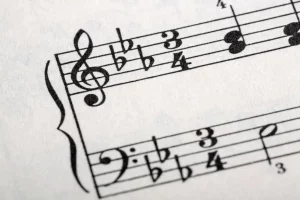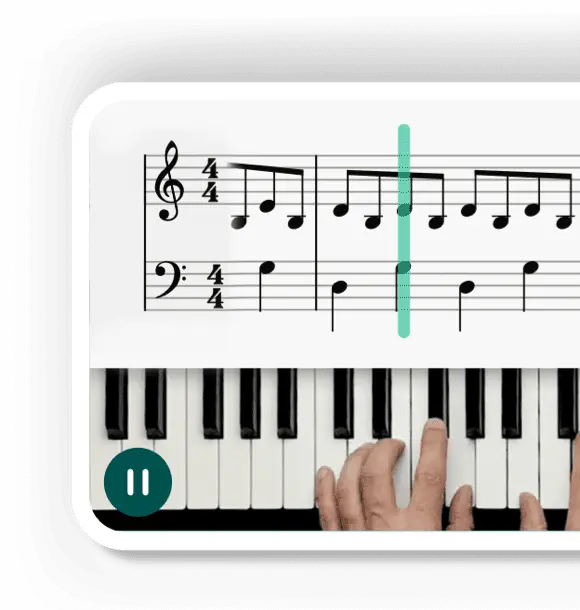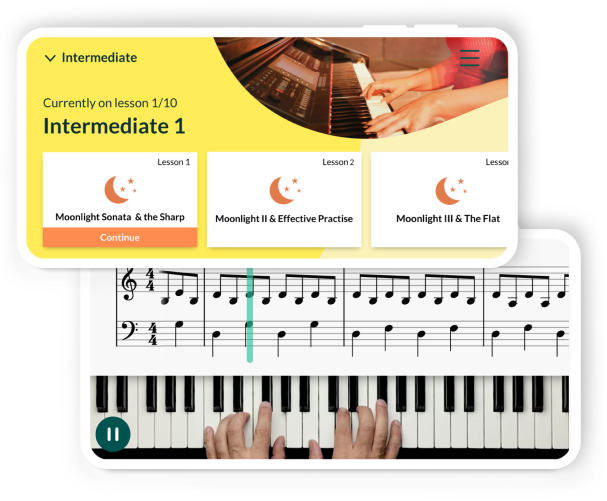A melody is one of the basic elements of music. Melodies are the part of music that is above the chords and rhythm. They can come in many shapes and sizes, and can have lyrics or be instrumental. They can be played very high, or very low. We can hear them played by instruments like a violin, guitar, saxophone, trumpet, or sung by a voice. The most important thing to remember is that they are always only one pitch at a time.
Musical ideas can be hard to explain and are often defined by using complex Italian music terms, or using difficult music theory — but Melody may be the simplest and easiest musical concept musicians have.
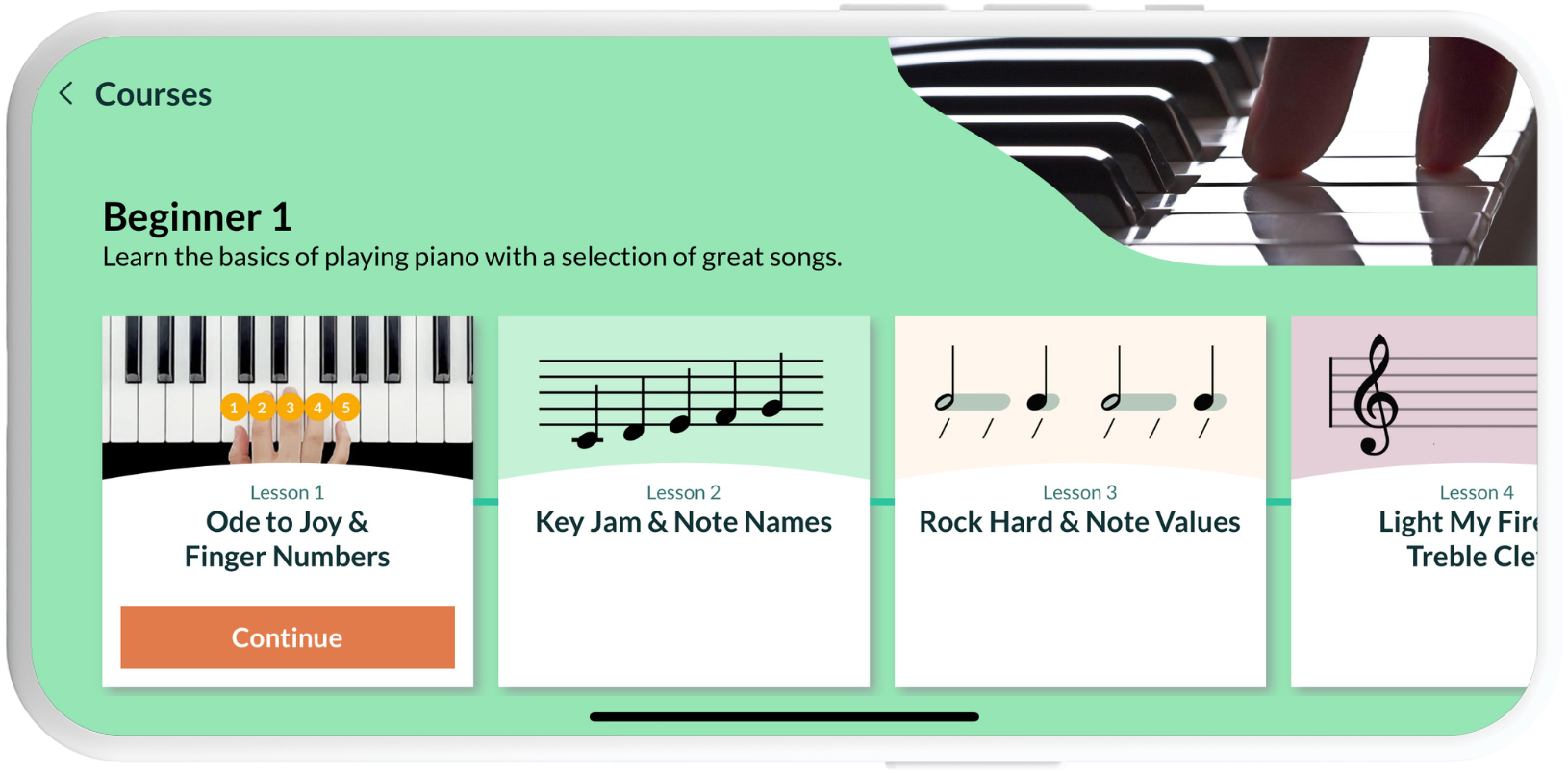
No credit card details required
A melody is something you can sing
Because a person can only sing one note at a time, we can use our voices to determine if something is or is not a melody. This article will teach you to identify all the different parts of a melody, and show you examples from many types of music!
Think of some melodies that you have heard or sung before, Happy Birthday? Yep! The Sound of Silence by Simon & Garfunkel? What a beautiful melody. Für Elise by Beethoven? Definitely yes!
Melodic lines are all around us, and sometimes we will write them down using music notation. Let’s look at a few examples of vocal melodies and see what makes them interesting.
Our first melody example is very common, and something we all can remember singing. This song is simple, and this melody consists of short and long notes. Happy Birthday To You – Patty Hill and Mildred J. Hill
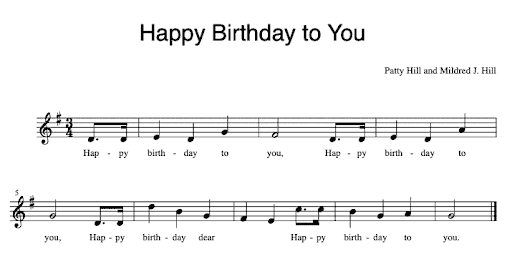
What is melody in a song?
What does a melody mean in music? We use melody in pop music to mean the part the singer performs. You’ll notice that both of these melodies are single notes, and small short phrases, using the exact same pitches. Often different sections will use the same musical ideas, and exactly the same melody, just with different lyrics. We call these Verses, and almost all compositions in popular music do this. After a verse comes a Chorus. This section has the same lyrics and melody every repeat.

Notice the next line of The Sound of Silence uses the same musical notes, pitches, but not the same lyrics! Sometimes in songwriting will add one or two extra notes to make the lyrics fit, but the melody and vocal line have the same shape.

How to describe melody in music?
If you’ve ever wondered how to describe melody, this is a great place to start. This piece uses no harmony, it has no chord progression, and it is a very simple tune. It can be performed by one singer, many singers, or on any instrument. It has four phrases, and like most European music in this historical period, it follows very basic melody rules.
You’ll notice each phrase begins with two musical tones that are the same, “Hap-py”. Each melodic phrase begins the same, but then the melodic motion begins to develop.
This formula is often followed in popular music, where each phrase of the melody begins in the same way and then is developed a little differently. One of the best places to learn to read music like this is the teaching application Skoove, and you can get a 7 day free trial to learn how to play anything!
How does sheet music show melody?
By looking at sheet music and being able to see what notes are being played, we can learn to recognize when melodies are repeated what makes up a musical composition. At the same time, we can learn why certain songwriters use different combinations of sounds in a piece of music. Melodies are often sung over harmony.
In this example the chords are played by a guitar, but they can be played by any instrument. It has one of my favorite simple chord progressions, but two different singers perform the same melody.
Bach’s influence on melody
We actually get our definition of melody in music from music earlier than Bach, but he composed over 1000 works! He certainly influenced the meaning of melody.
Just because we think of melody as something you can sing, it doesn’t mean a melody has to be sung. Some of my favorite melody lines come from classical music, where it was common to not have a singer. Bach is known as perhaps the most important classical musician of all time, particularly for his incredible use of Melody. He was known for taking beautiful simple ideas and spreading them out through many different instruments.
Here is an excerpt from his piece Jesu Joy of My Desiring, which was originally composed for Choir. The melody is so beautiful that it has now become a standard piece for all instruments.

Not having a singer means the melody can do things that a voice can’t do, like having a note played longer than one person could breathe, or too high or low to be sung.
Something else interesting Bach does in this melody is that he uses only 8th notes. Usually when musicians write music they contain many different rhythms. Bach here only uses Eighth notes, but relies on excellent phrasing to make the music beautiful. Note lengths look like this:
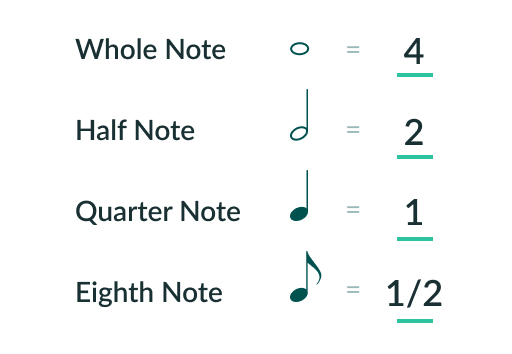
Skoove is a great platform for beginners who want to learn to play the piano, especially if they are interested in playing music by Bach. This example comes from a lesson on the Skoove app, which offers piano lessons for those who are just starting to learn the piano.
This app can help teach you how to play any melody or piece of music you want. It plays along with you, and has lots of different types of music from classical to pop, and does a great job of teaching you to read sheet music while watching real people play the instrument.
Melodic range
Hear how this melody line is spread out between the two hands of the piano, playing single notes at a time. This type of melody is very common throughout history, but it would not be a melody one person could sing as the pitch is too low and too high. A great place to learn to play this is here, with the Skoove App. You can use Skoove to play the Für Elise piano sheet music.
Even though the melody is performed by two hands, they work together as a single entity. The melody also is playing the exact same notes as the harmony, and this makes it a very effective and recognizable song.
The notes here move apart from each other as they spread out, this is called Disjunct Motion. This is a great song to practice your piano theory.
Melodies don’t have to be sung by people and because of that — melodies are everywhere! They appear in vocal music, pop music, classical music, anything!
Writing a big piece for an orchestra to play was something that Classical Composers did all the time. These pieces were called a Symphony. Our next example comes from a composer who writes for movie soundtracks.
Difference between melody and harmony
Musicians are always trying to compare melody vs harmony, but really the two work together. Melody And Harmony. A single note line soaring over the top of many notes that all work together to provide a support for the single line.
Sometimes we hear melodies in places we don’t expect, like in movie soundtracks! One of my favorites is by the composer, John Williams. He’s known of course for some of the most iconic movie soundtracks in western music, and for his unconventional use of rhythm.
This melody is very interesting because the phrases are short, and have an interesting shape. They only move back and forth, from one pitch to the next. It was written for low strings, but can be performed on any instrument that can create a low pitch.
It is interesting because the phrases are simple, but when they are on screen, it feels very scary. It has all the elements of a memorable melody, but it is not a conventional melody.
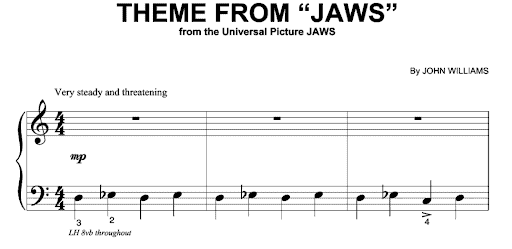
Since this example only has two notes, is it a melody? Well, remember the answer to our early question, “What does melody mean?”.
This melody example is especially amazing because it consists of only two notes, using stepwise motion. That means the notes are right next to each other. However, what makes the melody interesting and memorable is that over time, the rhythm begins to quicken, and the listener perceives a sense of dread. This is particularly a good example because it shows how even though it is not a sung music melody, and has no chords, it is still memorable.
The notes here move slowly towards each other, this is an example of melodic conjunct motion.
Notice that this song is written in 4/4, but starts with triplets. That seems hard but it is actually pretty simple! This song has no music tempo marking, so you can play it at whatever pace you want!
You can also skip the left hand, and accompany yourself using basic piano chords. The melodic line has a big sweeping upward feeling. Composers will write differently for different purposes, and for this purpose the composer wanted to create a sense of grandeur. This composition is performed by French Horn, playing in concert with a symphony orchestra.
Melody comes in all different forms, but mostly share the same small few points. Traditionally, melody was something that came only from one instrumentalist or vocalist at a time. These melodies could be accompanied by anything – from a small folk group, or a keyboard, or an entire orchestra! Writing the first two pitches so far away from each other creates a very interesting musical phrase.
Melodic finales
We can now identify melodies with what we have learned. Make sure to remember that Melodies:
- Have only one note at a time
- Can be performed by Instruments or Voices
- Are usually accompanied by chords
These examples of melodies should make it clear how melody can come in all sorts of shapes and sizes. Keep in mind that no matter what type of instrument it is being played by, or whether it is in popular music or classical music, melodies are always made up of the same small parts. Melody is everywhere and we can always be listening for them.
A great place to learn how to play beautiful melodies is with the Skoove app. It has lots of wonderful songs to play and guided videos that show you exactly what you need to do to bring melody into your life!
Author of this blog post:











